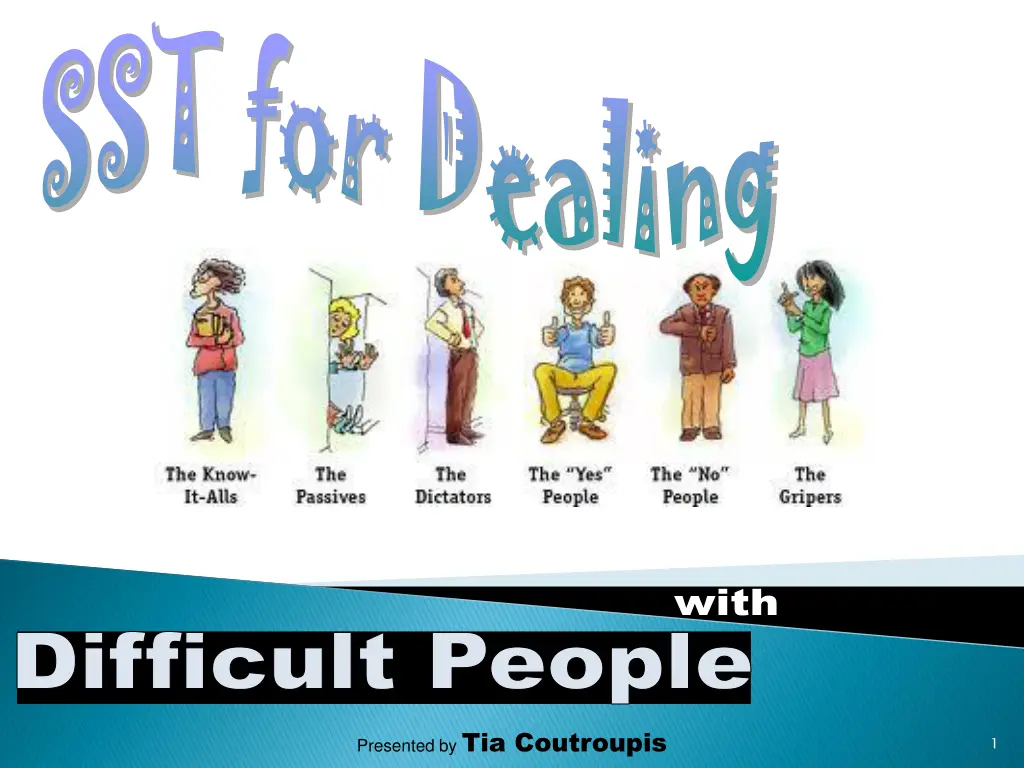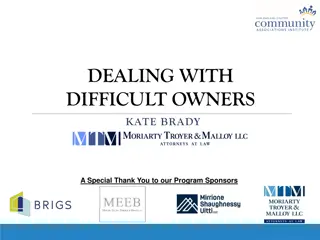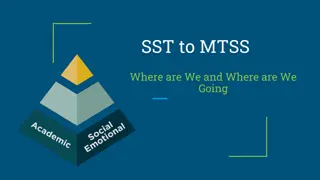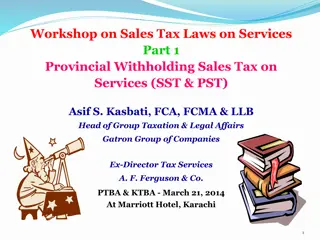
Dealing with Difficult People: Strategies and Reflection
Enhance your skills in effective communication and problem-solving while promoting positive involvement. Reflect on observing effective methods for dealing with difficult individuals and understanding their motivations. Identify different types of difficult personalities and learn strategies for handling them.
Download Presentation

Please find below an Image/Link to download the presentation.
The content on the website is provided AS IS for your information and personal use only. It may not be sold, licensed, or shared on other websites without obtaining consent from the author. If you encounter any issues during the download, it is possible that the publisher has removed the file from their server.
You are allowed to download the files provided on this website for personal or commercial use, subject to the condition that they are used lawfully. All files are the property of their respective owners.
The content on the website is provided AS IS for your information and personal use only. It may not be sold, licensed, or shared on other websites without obtaining consent from the author.
E N D
Presentation Transcript
SST for Dealing with Difficult People Presented by Tia Coutroupis 1
Sharpen my skill set in order to Sharpen my skill set in order to render effective listening and communication The Work Site Leader The Communicator collaborate around solutions The Problem Solver The Union Builder promote positive involvement increase BTU membership 2
The officially designated agent of the Union in any work location or functional division or group. (BTU Contract) conduct, behavior, demeanor in relation to others a plan, method, or series of maneuvers for obtaining a specific goal or result 3
Promoting reflection Cements learning Allowing participants time to make connections to their school community Allows processing time Provides an opportunity to make sense of the material Affording participants time to consider application Understanding Application 4
Recall a time when you observed someone effectively dealing with a difficult person. What did the person do? What did the person do? Using the Dealing Effectively sheet and markers, list the common descriptors that came out during your table talk Report out in 10 minutes (pick a reporter) 5
Most people are not difficult for the sake of being difficult. Even when it may seem that the person is just out to get you, there is always some underlying reason that is motivating them to act this way. Rarely is this motivation apparent. Try to identify the person's trigger: What is making him/her act in this manner? What is stopping him/her from cooperating? How can I help to meet his/her needs to resolve the situation? 6
TYPES of Difficult People Example TYPE: Which type of person? TYPE: A NEGATIVE person What are the AKA s of this behavior? AKAs: pessimists, but-ters, AKAs dampeners TICKS half empty, what could go wrong, what won t work REASONS what could go wrong before seeing the other possibilities. TICKS: They always see the glass What ticks us off about this behavior? REASONS: Their brain is wired to see What are some possible reasons for the behavior? TIPS: out the real issues: What is your exact concern? What barriers will need to be removed to promote success? What could go right with the current plan? TIPS: Be an active listener by seeking What are some tips for effectively handling people with this behavior? Where might you encounter this behavior in your work as a BR? ENCOUNTER: chapter committee meeting they could rain on every suggestion. ENCOUNTER: During the union 7
There are many different types of DIFFICULT people & The are different strategies to deal with each type 8
Strategies Strategies Treat the person with respect. Use the golden rule, "Do unto others as you would have them do unto you. Build a rapport. Re-instill the human touch by connecting with your colleagues and getting to know them as people. Focus on what is actionable. Choose not to harp on what you cannot change, focus on the actionable steps that can be taken. Be calm. Someone who is calm is seen as being in control, centered and more respectable. Understand the person's intentions. There is always some underlying reason that is motivating a person s behavior. Let the person know where you are coming from. Let the person know your intentions behind what is being said, done, and/or sought. Get some perspective from others. Seek out and listen to colleagues who have successfully interacted with the difficult person. Trump Card! When all else fails, remain cordial and professional. Keep them informed and refrain from discussions that are likely to escalate. 9
respectful fair caring trustworthy knowledgeable 10
Thank you for your participation! Please complete and turn in your evaluation, to help us better prepare for future PDs. Please complete and turn in your evaluation, to help us better prepare for future PDs. Session Title: Session Title: SST for Dealing with Difficult People Session Times: Facilitator: Session Times: [ ] 8:45 [ ] 10:30 [ ] 2:15 Facilitator: Tia Coutroupis 12






















